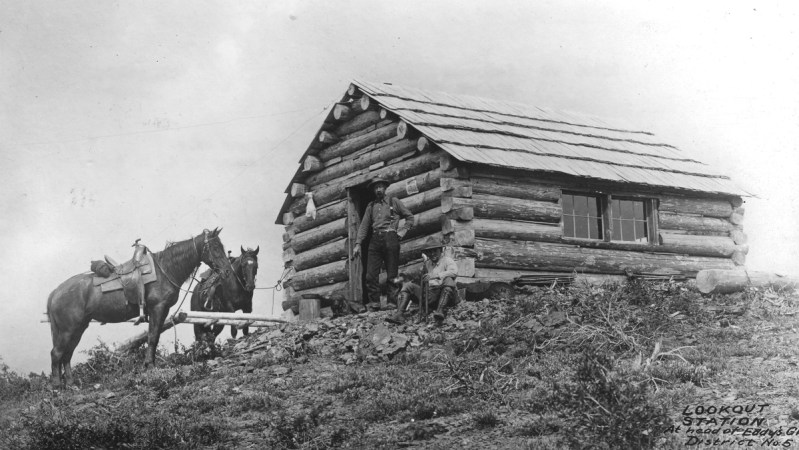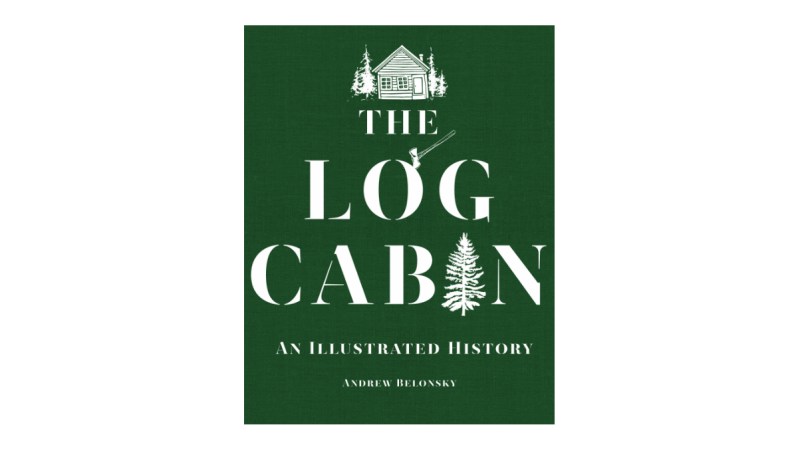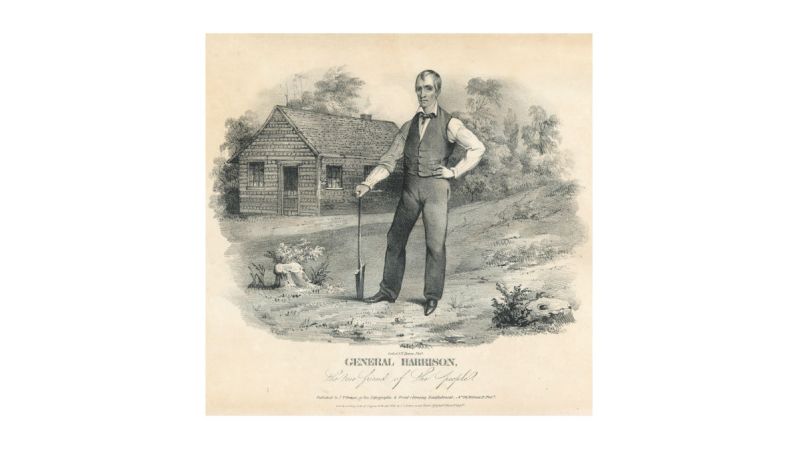
Have you ever thought about what it would be like to just pack everything up and move to a log cabin in the woods, away from the hustle and bustle of life? Who hasn’t thought about that from time to time might be the real question. Seriously, though, what about it doesn’t sound great? Peace and quiet, the rustic beauty of the cabin, the chance to wear flannel 24/7/365?
As you might be able to tell from the above daydreaming, is that you’re not alone. The log cabin — the myth of it as much as the actual reality of the log cabin as a structure — has been an integral part of the American identity for, well, forever. But why, exactly? What about log cabins make them so damn important in the minds of Americans?
In his new book, The Log Cabin: An Illustrated History

Right from the get-go, Belonsky dives into the obsession, writing, “Most Americans have a fondness for the log cabin, but not many understand why.” We like it, we love it, we want more of it, and we always have, apparently. This obsession is nothing new and it doesn’t seem to be going away anytime soon.
From the people who lived in what were called log cabins, but were really just dugouts with some rough cut logs over them because that was all they had, to those that basically turned Abraham Lincoln’s ancestral home that wasn’t actually his ancestral home (and we won’t even get into the fact that logs from the Lincoln cabin and logs from the Jefferson Davis cabin were intermingled amidst showing them around the country) into a traveling showpiece of Americana, to the lumbersexuals that tramp through the streets of Brooklyn lamenting that the Double IPA from their favorite craft brewery doesn’t taste the same since they sold out to the Man, Belonsky covers them all in fascinating detail.

For Belonsky (and for the nation as a whole), he writes, the log cabin is “Omnipresent, respected, and already imbued with transformative powers, [it has] remained the perfect American origin story for North and South Alike.” It doesn’t matter who you are or where you live, part of your makeup as an American, Belonsky infers, is thanks in part to log cabins (even if the only part there is consists of trips to the Ponderosa Steakhouse, which was named after the Ponderosa Ranch that the Cartwright family lived in on the show Bonanza.)
There are plenty of highlights and good times that encompass the log cabin in our history and this book could easily only cover them — who doesn’t love a good slug of log cabin syrup, after all? — but Belonsky does well to make sure that readers are able to see that, while we idolize the log cabin — hell, we’ve placed it on a pedestal that is made of smaller log cabins — there is also a dark side to things. Slavery. Subjugation. Deforestation. These topics (and more) are all part of the narrative, just as much as Honest Abe. In order to fully understand why we’re obsessed, Belonsky argues, these deserve equal representation in the story. The log cabin, he continues, “is a prism that reflects and refracts the American story. From one angle, it’s the key to a new future, the driver of incomparable, almost incomprehensible national expansion and wealth; from another, it’s the imprisonment and displacement of millions.”
Heavy stuff, but not stuff you can ignore, no matter how light and happy you want things to be.

Log cabins are great and all, you might be saying at this point, but this is still a history book. History. Sure, it’s got tons of awesome pictures from archives across the country that show the wide range of interpretations of log cabins since they were first built here on the shores of the great US of A, but it’s history for a reason. That’s where we’ll stop you, because this doesn’t feel like a history book in the classic, dusty, I slept through this class in high school and I’ll do it again sense. Throughout, Belonsky maintains a light, somewhat comical tone, juxtaposing contemporary phrases (“Why is the log cabin such a B.F.D. in the USA?” and “Remember the lesson from earlier about haters? Well, this Davy craze wasn’t without its detractors: Crockett truthers, if you will”) with the subject matter at hand.
What we’re saying, ultimately, is this book is as enjoyable as playing with Lincoln Logs was when you were a kid. (Lincoln Logs, by the way, were invented by John Lloyd Wright, son of famed architect Frank Lloyd Wright.) Belonsky does well to highlight the myriad connections we as a culture have to the log cabin and reminds us that even if we wanted to, say, escape into the woods to get away from it, we wouldn’t be able to get away from the idea of the log cabin (and if you ask us, we’re more than okay with that).
You can buy The Log Cabin: An Illustrated History The Log Cabin: An Illustrated History




